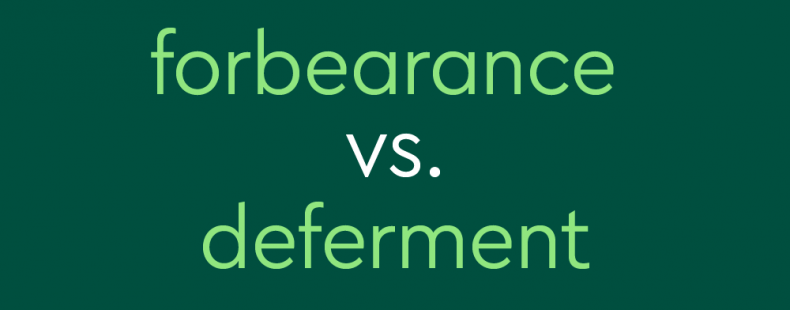If you have a loan, especially a student loan or a mortgage, there may come a time when you aren’t able to keep up with your payments. But there are options when it comes to repayment relief, including one called a forbearance and one called a deferment. Both can involve temporarily postponing or pausing (or temporarily lowering) loan payments.
But there can be a crucial difference between the two, and it’s whether the interest on the loan stops accruing (accumulating) or continues accruing while regular payments are on pause. That’s a big difference, and it can add up to a lot of money.
Luckily, we’re here to loan you our expertise—interest-free—and provide an easy-to-understand breakdown of exactly what both options mean, including specific examples of how each works in terms of mortgages and student loans.
⚡ Quick summary
The word forbearance commonly refers to a temporary pause on loan payments that usually involves the loan balance continuing to accrue interest. A deferment, on the other hand, typically involves a temporary pause on loan payments without interest continuing to accrue. However, different financial institutions may use these terms differently, especially in the different contexts of mortgages and student loans. Always read the fine print.
What is forbearance?
Forbearance is “a form of repayment relief granted by a lender that temporarily postpones payments due from a borrower, while interest on the loan typically continues to accrue.” Let’s break that down. The lender is the one providing the loan—the bank or institution loaning the money. The borrower is the one receiving the loan—the one responsible for paying it back.
When a borrower is not able to keep up with their regular payments, the lender may offer the option of a forbearance, meaning that the borrower can pause payments for a temporary period of time. But the terms of a forbearance usually require interest to keep accruing on the balance that’s owed. This means that a forbearance can result in an increase in the final amount required to be paid.
Let’s look at a simplified example involving student loans. Say you have $10,000 in student loans, and you’re paying a 1% interest rate per month. At the end of the first month of forbearance, the total loan amount you need to pay back will actually be $10,100, because the interest has continued to build up. And it will be even more with each subsequent month, as the interest rate is applied to the balance (in accordance with the specific terms of the loan).
Learn the basic language of loans with this review on using loan, loaned, lend, and lent.
Or, say that you have a $250,000 mortgage. Let’s keep it simple and set the interest at a monthly rate of 1%. Your lender may allow you to temporarily stop payments on your mortgage, such as after the loss of a job. At the end of the first month of a forbearance, your new balance will be $252,500, due to the accrued interest.
The terms of a forbearance vary for different types of loans and different lenders.
Outside of finance, forbearance has other, more general meanings related to self-control and refraining from doing things.
What is deferment?
In the context of loans, deferment often refers to a pause on payments during which interest does not continue to accrue. In other words, a deferment allows you to temporarily stop making payments on your debt without the interest continuing to pile up. The word deferral is sometimes used in the same way. Taking this option is sometimes called deferring a loan.
In the student loan and mortgage examples above, if you were granted a deferment of your loan payments, you would still owe the same amount ($10,000 or $250,000) whenever you were able to resume payments. Your loan would neither grow nor shrink—it would be temporarily frozen.
Sometimes, lenders use the word deferment in other ways. For example, it’s sometimes used to refer to an option that follows a forbearance, in which the skipped payments are set aside to be paid after the rest of the loan has been paid.
Like forbearance, the word deferment has other, more general meanings outside of finance, but it usually involves the postponement of something.
Our finances depend heavily on another set of terms worth discussing: inflation vs. deflation.
What is the difference between forbearance and deferment?
Forbearance and deferment can both refer to temporary pauses on debt payment, but forbearance usually involves the continued accumulation of interest, while deferment does not. If this is the case, and you have a choice between deferment and forbearance, it obviously makes sense to choose deferment when all other terms are equal.
However, the terms can be used differently by different lenders and for different types of loans. Sometimes, an option may involve both forbearance and deferment. And sometimes, such options come with other catches, such as a change in credit status. It’s always important to know the exact terms before entering into any agreement.
You can see if you qualify for student loan deferment or forbearance at StudentAid.gov.
You can learn more about mortgage forbearance from the Consumer Financial Protection Bureau.














